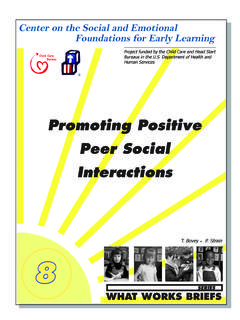Transcription of Motivational theory in practice at Tesco Case Study
1 1 Motivational theory in practice at Tesco Case Study Tesco began in 1919 with one man, Jack Cohen, a market stallholder selling groceries in London. Tesco was formed out of a merger with Stockwell from whom he purchased tea for sale on the stall. The first store opened in 1929. Since then, Tesco has expanded across the world. It now has over 2,200 stores including hypermarkets and Tesco Express outlets to meet different customer needs. As a conglomerate Tesco also offers alternative goods and services such as insurance, banking and online shopping. With net profits of around billion Tesco has become the largest British retailer and one of the world's leading retail outlets on three continents. Tesco 's growth has resulted in a worldwide workforce of over 468,000 employees. To support its growth, Tesco needs staff that are motivated, flexible and well-trained and who recognise customer needs. In turn, Tesco 's employees are supported by the company in their various roles and at different levels - from customer assistants in stores to department managers; from warehouse employees to office and logistics staff.
2 Tesco recognises that employee motivation is important for the continued growth of the company. This case Study looks at how Tesco motivates its employees by increasing their knowledge, skills and job satisfaction through training and development and providing relevant and timely reward and recognition. What is motivation? Motivation may stem from personal interest such as keeping safe or from external factors such as praise and reward. Different theories have been suggested for motivating employees. Pay is considered a primary motivator. Other motivating factors include: appreciation of hard work a sense of achievement responsibility and empowerment opportunity for advancement a sense of challenge and enjoyment. Benefits of motivated staff A motivated workforce will work harder and achieve greater output in less time, therefore reducing labour costs. It requires less supervision and demonstrates pride in its work, making a greater impact on the customer.
3 Motivated employees have greater concentration and are less likely to make mistakes, cause accidents or be involved in conflict. They are also likely to show greater loyalty to the company and have less absenteeism. An unmotivated workforce will be the opposite, being dissatisfied with its role in the work considers that the business depends on two groups of people customers and staff. It appreciates that staff are unique and have diverse lifestyles outside of work. To this end Tesco supports staff with a work/life balance and offers reward through: flexible working free or reduced rate health benefits discount gym membership 2 competitive salaries staff discount Company share options. Valuing employees Tesco has discovered that it is important to create trust and respect. It has found that by valuing employees, providing realistic goals and an interesting environment for them to work in, it increases employees motivation. At Tesco a motivated member of staff 'works in partnership with others to achieve individual and team objectives'.
4 This means that he or she focuses on customers, treats people fairly and is determined and devoted to receiving feedback from others. Taylor s Motivational theory In 1911 the engineer Frederick Taylor published one of the earliest Motivational theories. According to Taylor s research, people worked purely for money. In the early years of the car assembly industry, work on a production line was based on producing quantity and was repetitive. Workers were paid 'piece rate', that is, paid for every item produced. This approach of paying workers by results was good for the business. The outcome was greater production but gave little opportunity, encouragement or time for employees to think for themselves or be creative in what they did. This limited people's development and their use within the company. Employee rewards Tesco 's Employee Reward Programme has some similarity to Taylor s theory . Its financial reward packages are one motivating factor.
5 However, there are factors other than money which motivate people in both their personal and working lives. Tesco goes far beyond Taylor and gives more than just simple pay increases. It supports the varied lifestyles of individual employees through relevant and targeted benefits. Employees are more motivated if they feel content in their work. This often happens when their employer creates a good working environment where employees feel valued, generally through increased communication and being asked for their opinions. Employee motivation is also likely to be higher if the organisation invests in its staff through training and development. In turn this enhances their knowledge, skills and their sense of job satisfaction. Measuring staff satisfaction Every year Tesco invites its staff to take part in a staff satisfaction survey called Viewpoint which gives them the opportunity to express their views on almost every aspect of their job.
6 The results from the survey help Tesco make sure it is offering the right things to its staff to keep them motivated. Some of the benefits available to staff include: Lifestyle break this offers 4-12 weeks off work and guarantees the job back at the end. Career breaks allowing staff between 6 months - 5 years away from work with right of return Pension scheme this award-winning scheme provides clearly defined long term benefits. 3 The Mayo effect Internal or external factors may motivate a person to change or develop their actions. For example, an internal factor may be the desire to learn a new skill. This would reward the individual. External factors include, for example, sales targets and incentives. A more negative motivator might be no pay rise if targets are not achieved. In the early 1930s the theorist Elton Mayo suggested that motivation at work was promoted by such factors as: greater communication good teamwork showing interest in others involving others in decision making ensuring the wellbeing of others ensuring work is interesting and non-repetitive.
7 Mayo based his assumptions on research undertaken with workers at the Hawthorne plant of the Western Electric Company in Chicago. His work resulted in the Hawthorne theory . He suggested that boredom and repetitiveness of tasks led to reduced motivation. He believed that motivation was improved through making employees feel important, giving them a degree of freedom to make choices and acknowledging their social needs. Communication At Tesco the Mayo theory is seen to be operating throughout the company. Communication is an extremely important factor in motivating employees. This may be through 1-to-1 discussions with managers, through the company intranet or newsletters or through more formal structures such as appraisals. Line managers hold a daily Team Meeting to update staff on what is happening for the day and to give out Value Awards. These awards can be given from any member of staff to another as a way of saying thank you and celebrating achievements.
8 Motivation from training and development Tesco also promotes motivation through its many training and development opportunities. Everyone has access not just to the training they need to do their job well but also to leadership training to grow within the company. Tesco offers strategic career planning to help staff 'achieve the extraordinary'. In 2009 Tesco appointed 3,000 managers 80% internally. As well as an annual career discussion with every employee, the company also emphasises the development of the whole person and has implemented a system of 360 degree feedback. This is a personal development tool which provides feedback from a selection of people with whom the employee works. This helps employees to understand their behaviour, strengths and weaknesses within the workplace as others see them. The idea of the programme is to 'Take People with You' and 'To Gain the Hearts and Minds of Others' in order to improve individuals and get things done efficiently.
9 4 Personal development plans All Tesco employees have a Personal Development Plan which they build through their 360 degree feedback and other tools. This enables Tesco managers to offer meaningful feedback to employees to help provide opportunities for continuous personal development. This personal approach helps employees to reach their full potential by encouraging self-assessment and providing advancement through ongoing training. It also enables individuals to take responsibility for their development. This two-way relationship ensures that the employee is committed to the values of the company, that he or she works in partnership with others and helps improve the business for customers. Maslow and Herzberg Maslow Abraham Maslow argued that humans are motivated by five essential needs. He formed a pyramid demonstrating these needs which he called the 'hierarchy of needs'. At the bottom of the pyramid are basic needs, those that motivate people to work food and shelter.
10 Once these needs are met through pay, individuals want safety and security through, for example, good job conditions. Social needs refer to the need to belong, to be part of a group. Self-esteem may arise from a promotion. Right at the top is Self-fulfilment - the area for creativity, challenge and interest. Maslow suggested that achieving one level motivates us to achieve the next. 5 Herzberg In 1959 Frederick Herzberg developed the Two-Factor theory of motivation. His research showed that certain factors were the true motivators or satisfiers. Hygiene factors, in contrast, created dissatisfaction if they were absent or inadequate. Dissatisfaction could be prevented by improvements in hygiene factors but these improvements would not alone provide motivation. Herzberg showed that to truly motivate an employee a business needs to create conditions that make him or her feel fulfilled in the workplace.






